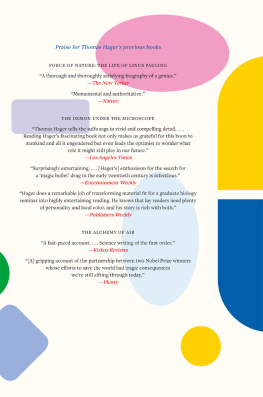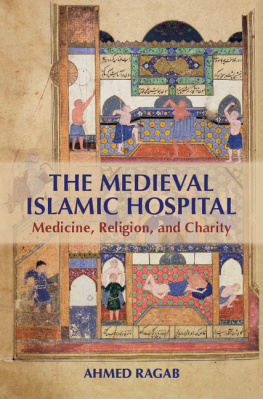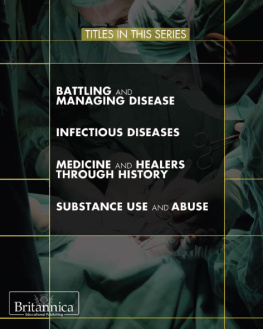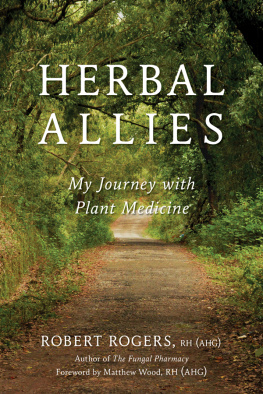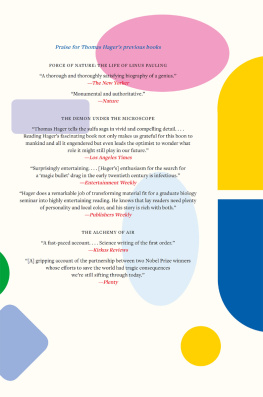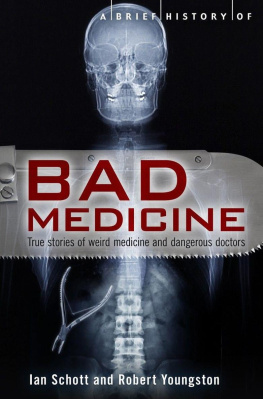
Copyright 2019 Thomas Hager
Cover 2019 Abrams
Published in 2019 by Abrams Press, an imprint of ABRAMS. All rights reserved. No portion of this book may be reproduced, stored in a retrieval system, or transmitted in any form or by any means, mechanical, electronic, photocopying, recording, or otherwise, without written permission from the publisher.
Library of Congress Control Number: 2018936303
ISBN: 978-1-4197-3440-3
eISBN: 978-1-68335-531-1
Abrams books are available at special discounts when purchased in quantity for premiums and promotions as well as fundraising or educational use. Special editions can also be created to specification. For details, contact specialsales@abramsbooks.com or the address below.
Abrams Press is a registered trademark of Harry N. Abrams, Inc.

ABRAMS The Art of Books
195 Broadway, New York, NY 10007
abramsbooks.com
For Jackson, Zane, and Elizabeth
CONTENTS
INTRODUCTION
50,000 PILLS
On a business trip years ago, I had an extra day in London. So like many tourists, I headed to the British Museum. And there I ran across something extraordinary.
In a large, light-filled gallery on the ground floor was a table covered with thousands of pills. It was an exhibit conceived by an artist and a doctor who had come up with a way to display all the 14,000 doses of prescription drugs an average Briton took in a lifetime. These pills, woven into lengths of fabric and accompanied by bits of explanatory text, covered a gallery table that stretched forty-six feet. I couldnt believe what I was seeing. Did people really take this many pills?
The answer is: No. They take more. The display was geared for Britain. And when it comes to taking drugs, the British dont come close to Americans. More than half of all Americans take at least one prescription drug on a regular basis, and most of those who fall into that group take more than one (somewhere between four and twelve prescriptions per person per year, depending on which study you look at). One expert estimates that Americans take an average of ten pills per person per day. Add in nonprescription drugsover-the-counter vitamins, cold and flu remedies, aspirin, and other supplementsand run the numbers: Lets say a low-ball estimate of two pills per day per American over an average seventy-eight-plus years of life. The total comes to somewhere more than 50,000 pills, on average, in the average Americans lifetime. And theres a good chance its a lot more. America consumes more pharmaceuticals than any other nation on earth, and we spend a lot more to get them: more than $34 billion each year on over-the-counter drugs, and $270 billion on prescription drugs. Thats way beyond what any other nation spends, because our drug prices are a lot higher than any other nations. Americans constitute less than 5 percent of the world population but spend more than 50 percent of the money that flows into the worlds drug companies.
And thats not even counting illegal drugs.
No nation in human history has taken as many drugs or spent as much money to get them as the United States does today. And the drugs have had profound effects. They have added decades to our average life spans, playing a central role in the graying of America. Drugs have changed the social and professional options of women. Drugs have altered the ways we view our minds, changed our attitudes toward the law, shifted international relations, and triggered wars.
By these measures, perhaps we should rename our species Homo pharmacum, the species that makes and takes drugs. We are the People of the Pill.
This book will introduce you to how we got here, with a focus on medical (that is, legal, non-recreational, mostly prescription) drugs. It is written as a series of brief, vivid sketches, sort of mini-biographies of ten drugs that changed medical history, linked by common themes, with each story leading into the next.
One of those common themes is the evolution of drugs. The word drug itself comes from old French and Dutch terms for the barrels once used to keep herbs dry. Pharmacists 150 years ago were in many ways like todays herbalists, extracting and compounding their medicines for the most part from jars of dried plants. That gave doctors in the 1800s a couple-dozen somewhat effective natural medicines to help their patients (along with hundreds of useless, often alcohol-rich elixirs, poultices, and pills made and ballyhooed by local pharmacists). Today we have ten-thousand-plus, ever-more-targeted, increasingly powerful high-tech medicines that can treat and often cure conditions that have confounded healers for thousands of years.
Wrapped in this evolution and guiding its trajectory is humanitys search for magic bullets, medicines that can unerringly seek out and destroy diseases in our bodies without doing any harm to our health along the way. The goal has always been to find medicines that are all-powerful, but without any risk. That is likely an impossible goal. We havent yet found a perfect magic bullet. But we keep inching closer.
Another thread that runs through these chapters tells a bit about the growth of the industry that makes drugsthe trillion-dollar behemoth that critics have dubbed Big Pharmaand changes in the ways we regulate that industry. For instance, in the 1880s you could get just about any drug you wanted without a prescription, over the counter, including mixtures laced with opium, cocaine, and cannabis. Now you need a prescription for almost any powerful medicinal drug, and even with a prescription you cant buy narcotics like heroin (well, at least not in the United States). Drugmakers before 1938 could put just about anything they wanted on the market as long as it didnt kill you, and they didnt try to fool you with false advertising. Today, prescription drugs have to be proven both safe and effective before they can be sold. These laws governing our drugs evolved, in sometimes surprising ways, along with the drugs themselves.
Our attitudes have changed, too. In the 1880s, most people considered the right to self-medicate as something close to inalienable. It didnt matter if a drug was good for you or not, deciding whether to take it was your choice, not your doctors. If you wanted to buy one of the many patent medicine horrors available from local drugstores, anything from radioactive water for cancer to opium-spiked syrups for insomnia, well, it was your body. Nobody had the right to tell you otherwise.
Today thats been turned on its head. Now physicians hold the keys (in the form of their prescription pads) to getting most drugs. Today, when it comes to taking our medicine, we pretty much do as were told.
Drugs changed the practice of medicine, too. In the 1880s, doctors were family counselors good at diagnosing ailments and providing solace and advice to relatives, but almost powerless to alter the course of killer diseases. Today, physicians are able to work miracles of lifesaving that their brethren a century ago could only dream of. They are also all too often overscheduled, data-stuffed technocrats more comfortable reading lab reports than holding a patients hand.
During the past sixty years, the average life expectancy for Americans has lengthened by two months each yearmostly because of drugs. Vaccines have allowed us to completely conquer age-old enemies like smallpox (and were closing in on polio). Prescription drugs, along with public health efforts, have made our lives much longer and, in general, healthier.
Next page
